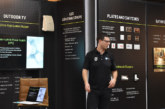Jonathan Rickard, Head of Sustainability and Design at Abri, a housing provider in the south of England asks, what will the new electric vehicle chargers law for new homes in England mean to customers and the housing sector?
In late 2021 Government announced that all newly built homes (and offices) in England will need to feature an electric vehicle (EV) charging point from 2022. What does this mean at a practical level, both for customers and the housing sector at large?
England is the first country in the world to require all new homes, by law, to have an EV charging point. The Government has estimated that the new regulations will mean that an extra 145,000 charging points are installed in England each year as part of its wider plan to cut carbon emissions. This move comes in the run-up to the government’s ban on the sale of diesel vehicles, due to take effect in 2030.
That’s a bold ambition by Government and a clear statement of intent – one we should all welcome. The responsibility now sits with industry to get this right for customers and for a long-term low carbon future.
A growing market
To deliver, there are some key challenges that we must recognise and address. They start with the infancy of the market.
EVs and EV charging infrastructure is developing at a terrific pace. The solutions that suppliers were offering a year ago are already very different from what they offer today, and the speed of progress is set to continue.
As housebuilders and landlords, it is critical we consider not just the here and now but the long-term. We need to be confident that the solution we invest in today will not be outdated or superseded in five- or ten-years’ time. That’s a tall order and one that requires careful planning and consideration.
To a certain extent, industry and suppliers will need to set aside commercial differences and collectively invest in further research and development. This should not be a box-ticking exercise but a collective effort for the greater good. Rather than rushing to invest in the technology that’s immediately available, we need to think carefully about what’s best for customers, now and in the future, in terms of practicality and affordability.
Holistic approach
Plans to integrate EV charging points also need to be considered in line with good placemaking. How can parking space best be balanced, between providing communal open space, and the driveways required for charging points? Ultimately the challenge of delivering truly sustainable communities is a holistic one.
Of course, providing the necessary infrastructure for consumers to be able to invest, with confidence, in electrical vehicles has an important part to play. But let’s not forget that creating any sort of vehicle is carbon intensive; cars are largely made of steel and rubber.
Together with developing EV infrastructure, we also need to reduce reliance on personal vehicles through car-sharing and improved low carbon public transport. Many new buildings are deliberately built without or with fewer car parking spaces to encourage people to travel by public transport.
Looking at different mobility solutions may be key to making low carbon transport accessible and affordable for all. Considered in this way, what we have here is a huge opportunity to think differently and to improve community cohesion and engagement.
Network capacity
Ensuring sufficient capacity will be something else for Government and housebuilders to consider. When planning developments and targeting a certain percentage of electric charger use, there needs to be sufficient capacity to deal with demand. It is estimated that the amount of electricity to run an electric car is about the same as that needed to power a house, so future schemes with charge points will need more network capacity.
The push for electric vehicles, indeed all efforts to drive forward a low carbon future, are welcome, but each is inter-reliant. As a sector we have a responsibility not simply to deal with this latest challenge in isolation but instead to consider the bigger picture and a future that is sustainable, in every sense. At Abri, our first priority remains with our customers and delivering future homes and communities that work for them.
Jonathan Rickard is Head of Sustainability and Design at Abri, a housing provider in the south of England which builds and manages homes for affordable and social rent, Shared Ownership and Help to Buy.









